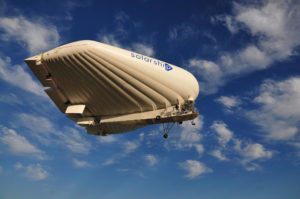 A dynamic partnership between a duo of drone companies could improve the lives of native populations in a remote Arctic territory.
A dynamic partnership between a duo of drone companies could improve the lives of native populations in a remote Arctic territory.
Solar Ship and Arctic UAV Partnerships recently signed a joint venture to create aerial-data drone programs in the Canadian territory of Nunavut. The effort will see the launch of hybrid UAVs from “self-reliant hangars” to support the Inuit communities in gathering “intelligence on changing environments and developing ideas on how to mitigate risks and create new economic opportunities,” according to as project press release.
The venture will rely on DIY data collection from within the Inuit communities – especially among youths and hunters. Data garnered from drone flights will be shared among development agencies in what is known as Canada’s northern “Smart Remote Economies.”
Arctic UAV CEO Kirt Ejesiak explained:
“Northern climates are changing more rapidly than most people realize. Solar Ship’s technology represents a big leap forward in our ability to collect data and develop solutions. They are good listeners and are eager to help us create new economic models and new jobs for our youth, while respecting traditional knowledge and Inuit culture.”
Ejesiak’s company – based in Nunavut – specializes in aerial surveys for community planning and natural resource development projects, as well as inspections and security for remote operating bases.
Toronto-based Solar Ship develops hybrid aircraft and aerostats that use both static lift – a process employing buoyant gas as found in airship’s, as well as a fixed-wing airframe.
“[Arctic UAV has] a great understanding of our technologies and our way of working with remote communities,” Solar Ship CEO Jay Godsall said.
“The most valuable natural asset in the north is brainpower. Arctic UAV’s work with traditional knowledge holders and local youth gives us great hope that we can work together to continually improve our tools and systems.”
Over the last few years, the drone sector has powered a technological blizzard in the Artic region. In 2016, the FAA unveiled the Arctic Implementation Plan to create “operational areas and corridor routes in the Arctic” for drones.
Last year, Intel announced a collaboration with a noted photographer/conservationist to track polar bear populations across the Arctic.
Jason is a longstanding contributor to DroneLife with an avid interest in all things tech. He focuses on anti-drone technologies and the public safety sector; police, fire, and search and rescue.
Beginning his career as a journalist in 1996, Jason has since written and edited thousands of engaging news articles, blog posts, press releases and online content.
Email Jason
TWITTER:@JasonPReagan
Subscribe to DroneLife here.







[…] Source link […]